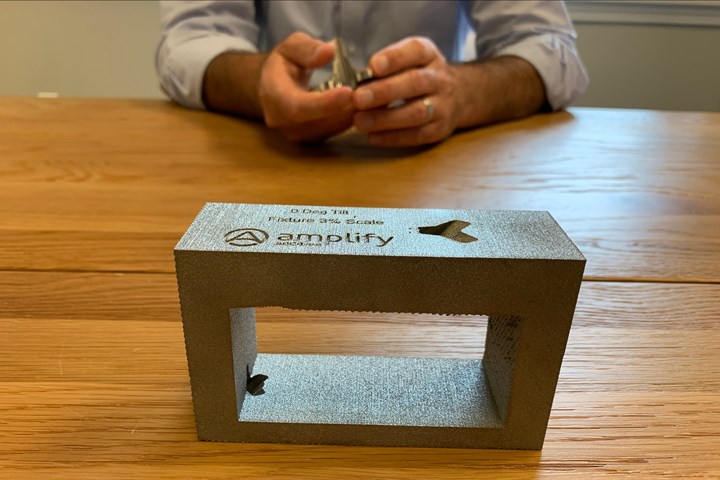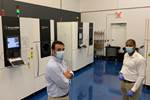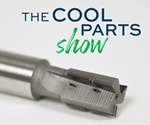With This 3D Printed Block, EBM Is an Aid to CNC Machining
Holding the part is a challenge of machining for additive manufacturing. This medical manufacturer prints fixture tooling tailored to its additive parts.

This fixture tool for holding additive manufactured parts for machining was made within the same EBM build as the parts themselves.
Production metal parts made via additive manufacturing (AM) need CNC machining as a secondary step. This point is practically universal. CNC machining can produce close-tolerance features such as threaded holes and flat mating surfaces that are too precise for 3D printing. The metal removal needs are often slight in AM, but the machining can be difficult nevertheless because of the challenge of holding and positioning the organic-shaped additive part.
Amplify Additive had this challenge with orthopedic implants made via electron beam melting (EBM — the metal AM technology from Arcam, now part of GE Additive). Or, more accurately, its machining supplier had this challenge. Engineering setups to hold the complex parts Amplify sent it would introduce lead time delay. In one extreme case (partly a result of disruption related to covid), Amplify faced a lead time of four months on machining work from this shop, which is more than 100 times longer than the lead time the 3D printing requires.
To help, Amplify has begun to design and 3D print the fixture tooling for machining in parallel with the implants and provide both to the machine shop. The photo shows an example. The long stem of an implant fits through the precise opening in the top face of this block and is secured within the notch in the inner corner. The visible “3%” figure refers to these features being oversize by that amount relative to the AM part. This margin, plus the positioning of these features, orients the part precisely to present the surface in need of machining to the machine tool’s spindle.
This seemingly simple tool also shows off some of the advantages of electron beam melting. The high-temperature process (hotter than laser powder bed fusion) reduces thermal stress, making it easier to print a square form useful for setup on a machine tool. Also, EBM is a process with less need for support structures than laser powder bed fusion, which in this case allowed Amplify to simply add this tool to one of its builds and send the tool to the machine shop in its as-printed form.
Related Content
-
BMW Expands Use of Additive Manufacturing to Foster Production Innovations
The BMW Group is manufacturing many work aids and tools for its own production system using various 3D printing processes, with items such as tailor-made orthoses for employees, teaching and production aids, and large, weight-optimized robot grippers, which are used for such things as carbon fiber-reinforced polymer roofs and entire floor assemblies.
-
Complete Speaker Lineup Announced for the 3D Printing Workshop at NPE2024: The Plastics Show
Presentations will cover 3D printing for mold tooling, material innovation, product development, bridge production and full-scale, high-volume additive manufacturing.
-
Chuck Jaws Achieve 77% Weight Reduction Through 3D Printing
Alpha Precision Group (APG) has developed an innovative workholding design for faster spindle speeds through sinter-based additive manufacturing.











